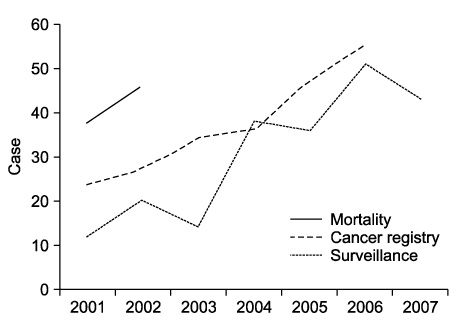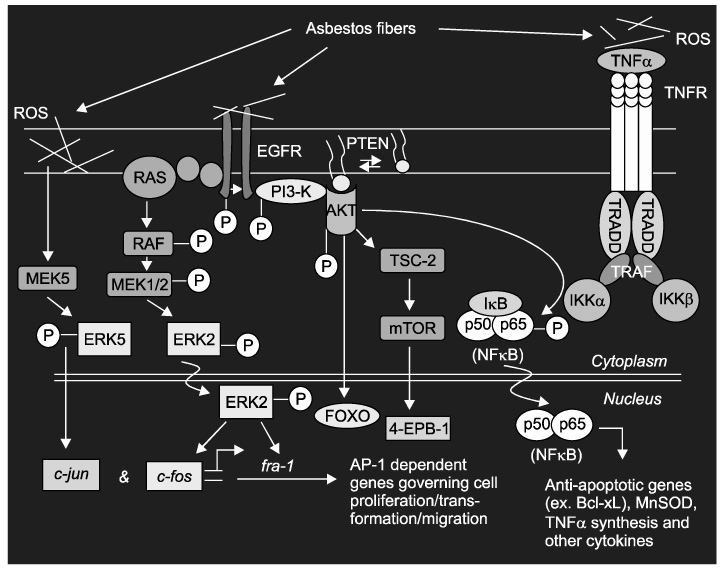Tuberc Respir Dis.
2011 Nov;71(5):317-321.
Clinical Year-in-Review of Occupational Lung Disease
- Affiliations
-
- 1Department of Internal Medicine, Yonsei University Wonju College of Medicine, Wonju, Korea. wonylee@yonsei.ac.kr
Abstract
- Occupational lung disease (OLD) is a group of lung diseases caused and/or aggravated by organic and inorganic inhaled dust, fumes, and mist. OLD can develop under various occupational situations. Therefore, occupational history should be considered when evaluating respiratory symptoms. Once OLD is developed, it may not be treated and may even progress after exposure to the causative agents has stopped. The best ways to treat OLD are prevention and early detection by controlling the working environment and conducting regular surveillance of workers. Common OLDs in Korea are coal worker's pneumoconiosis, asbestos-related diseases, and occupational asthma. Recent aspects of these common OLDs in Korea will be described based on recently published studies.
Keyword
MeSH Terms
Figure
Reference
-
1. Kang SK, Kim EA. Occupational diseases in Korea. J Korean Med Sci. 2010. 25:Suppl. S4–S12.2. Kimura K, Ohtsuka Y, Kaji H, Nakano I, Sakai I, Itabashi K, et al. Progression of pneumoconiosis in coal miners after cessation of dust exposure: a longitudinal study based on periodic chest X-ray examinations in Hokkaido, Japan. Intern Med. 2010. 49:1949–1956.3. Santo Tomas LH. Emphysema and chronic obstructive pulmonary disease in coal miners. Curr Opin Pulm Med. 2011. 17:123–125.4. Kuempel ED, Wheeler MW, Smith RJ, Vallyathan V, Green FH. Contributions of dust exposure and cigarette smoking to emphysema severity in coal miners in the United States. Am J Respir Crit Care Med. 2009. 180:257–264.5. Antonescu-Turcu AL, Schapira RM. Parenchymal and airway diseases caused by asbestos. Curr Opin Pulm Med. 2010. 16:155–161.6. Kim HR. Overview of asbestos issues in Korea. J Korean Med Sci. 2009. 24:363–367.7. Heintz NH, Janssen-Heininger YM, Mossman BT. Asbestos, lung cancers, and mesotheliomas: from molecular approaches to targeting tumor survival pathways. Am J Respir Cell Mol Biol. 2010. 42:133–139.8. Cowl CT. Occupational asthma: review of assessment, treatment, and compensation. Chest. 2011. 139:674–681.9. Henneberger PK, Mirabelli MC, Kogevinas M, Antó JM, Plana E, Dahlman-Höglund A, et al. The occupational contribution to severe exacerbation of asthma. Eur Respir J. 2010. 36:743–750.10. Lemiere C, Chaboillez S, Welman M, Maghni K. Outcome of occupational asthma after removal from exposure: a follow-up study. Can Respir J. 2010. 17:61–66.11. Malo JL, L'archevêque J, Castellanos L, Lavoie K, Ghezzo H, Maghni K. Long-term outcomes of acute irritant-induced asthma. Am J Respir Crit Care Med. 2009. 179:923–928.12. Oh SS, Kim KS. Occupational asthma in Korea. J Korean Med Sci. 2010. 25:Suppl. S20–S25.




